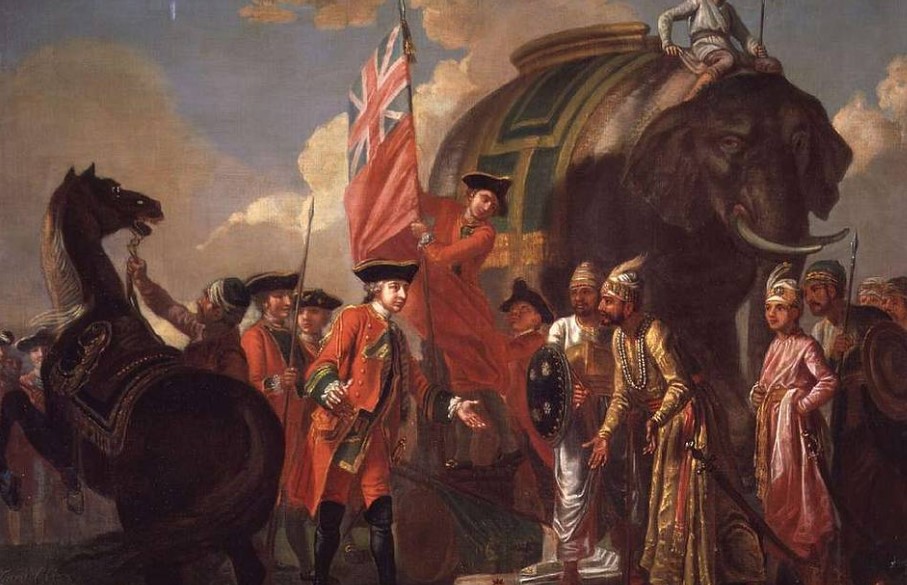
Modern History MCQs – 1 (Arrival of Europeans in India)
Most important multiple choice questions from the chapter – Arrival of Europeans in India MCQs.
Home » UPSC Study Materials » Prelims Express » Chapterwise MCQs » Modern History MCQs » Modern History MCQs – 18(Indian National Army and Royal Indian Navy Mutiny)
Indian National Army and Royal Indian Navy Mutiny MCQs with answers and explanations for UPSC and Other examinations.
1. Which among the following parties was founded by Subhash Chandra Bose in the Year 1939 after he broke away from the Congress ?
(a) Indian Freedom Party
(b) Azad Hind Fauj
(c) Revolutionary Front
(d) Forward Bloc
Correct Answer – (d) Forward Bloc
2. Who among the following was the political mentor of Subhash Bose ?
(a) Chittaranjan Das
(b) Mahatma Gandhi
(c) Gopal Krishna Gokhale
(d) None of the Above
Correct Answer – (a) Chittaranjan Das
3. Consider the following statements about Indian National Army :
1. It was founded in 1946.
2. It was founded by Subhash Chandra Bose.
Which of the above statements is/are correct ?
(a) 1 only
(b) 2 only
(c) Both 1 & 2
(d) None of the above
Correct Answer – (d) None of the above
4. Who among the following gave the famous slogan of ‘Tum Mujhe Khoon Do, Mai Tumhe Azadi Dunga’ ?
(a) Mahatma Gandhi
(b) Bal Gangadhar Tilak
(c) Subhash Chandra Bose
(d) Bhagat Singh
Correct Answer – (c) Subhash Chandra Bose
5. Who among the following established Rani Laxmibai Regiment as a part of Indian National Army ?
(a) Rash Bihari Bose
(b) Vallabhbhai Patel
(c) Lakshmi Swaminathan
(d) Subhash Chandra Bose
Correct Answer – (d) Subhash Chandra Bose
6. Who among the following represented The Indian National Army in 1945 in the famous Red Fort trials ?
(a) Jawaharlal Nehru
(b) Kailash Nath Katju
(c) Sir Tej Bahadur Sapru
(d) Bhulabhai Desai
Correct Answer – (d) Bhulabhai Desai
7. The Royal Indian Naval Mutiny first started at which among the following places ?
(a) Bombay
(b) Poona
(c) Delhi
(d) Madras
Correct Answer – (a) Bombay
8. Subhash Bose formed the Provisional Government for Free India in 1943 in which among the following places ?
(a) Germany
(b) Singapore
(c) Japan
(d) None of the Above
Correct Answer – (b) Singapore
9. The Indian National Army failed in its objective to march to Delhi and free India from British rule due to which among the following reasons ?
(a) Death of Subhash Bose
(b) Dispute among the Soldiers
(c) Surrender of Japan in the Second World War
(d) Opposition of Gandhi
Correct Answer – (c) Surrender of Japan in the Second World War
10. Subhash Bose died in a plane crash in which among the following places ?
(a) Germany
(b) Singapore
(c) Japan
(d) Taiwan
Correct Answer – (d) Taiwan
More questions are coming soon. Join us on Whatsapp for latest updates: Join CivilsCracker on Whatsapp

Most important multiple choice questions from the chapter – Arrival of Europeans in India MCQs.

Most important multiple choice questions from the chapter – Battle of Plassey and Battle of Buxar MCQs.

Most important multiple choice questions from the chapter – Social and Religious Reform Movements MCQs.

Most important multiple choice questions from the chapter – Anglo Mysore Wars and Anglo Maratha Wars MCQs.

Most important multiple choice questions from the chapter – Governor Generals of India MCQs.

Most important multiple choice questions from the chapter – Revolt of 1857 MCQs.

Most important multiple choice questions from the chapter – Organizations before Indian National Congress MCQs.

Most important multiple choice questions from the chapter – Important Sessions of Indian National Congress MCQs.

Most important multiple choice questions from the chapter – Partition of Bengal and Swadeshi Movement MCQs.

Most important multiple choice questions from the chapter – Surat Split and Lucknow Pact MCQs.

Most important multiple choice questions from the chapter – Arrival of Gandhi and Jallianwala Bagh Massacre MCQs.

Most important multiple choice questions from the chapter – Khilafat and Non Cooperation Movement MCQs.

Most important multiple choice questions from the chapter – Simon Commission and Nehru Report MCQs.

Most important multiple choice questions from the chapter – Civil Disobedience Movement MCQs.

Most important multiple choice questions from the chapter – Communal Award and Poona Pact MCQs.

Most important multiple choice questions from the chapter – Individual Satyagraha and Cripps Mission MCQs.

Most important multiple choice questions from the chapter – Quit India Movement MCQs.

Most important multiple choice questions from the chapter – Cabinet Mission and Formation of Constituent Assembly MCQs.

Most important multiple choice questions from the chapter – Independence and Partition of India MCQs.
We are adding new Notes, Chapterwise MCQs, Quizzes, Previous Years Questions everyday
We are adding new Notes, Chapterwise MCQs, Quizzes, Previous Years Questions everyday